For 1st time, scientists write words in liquid water
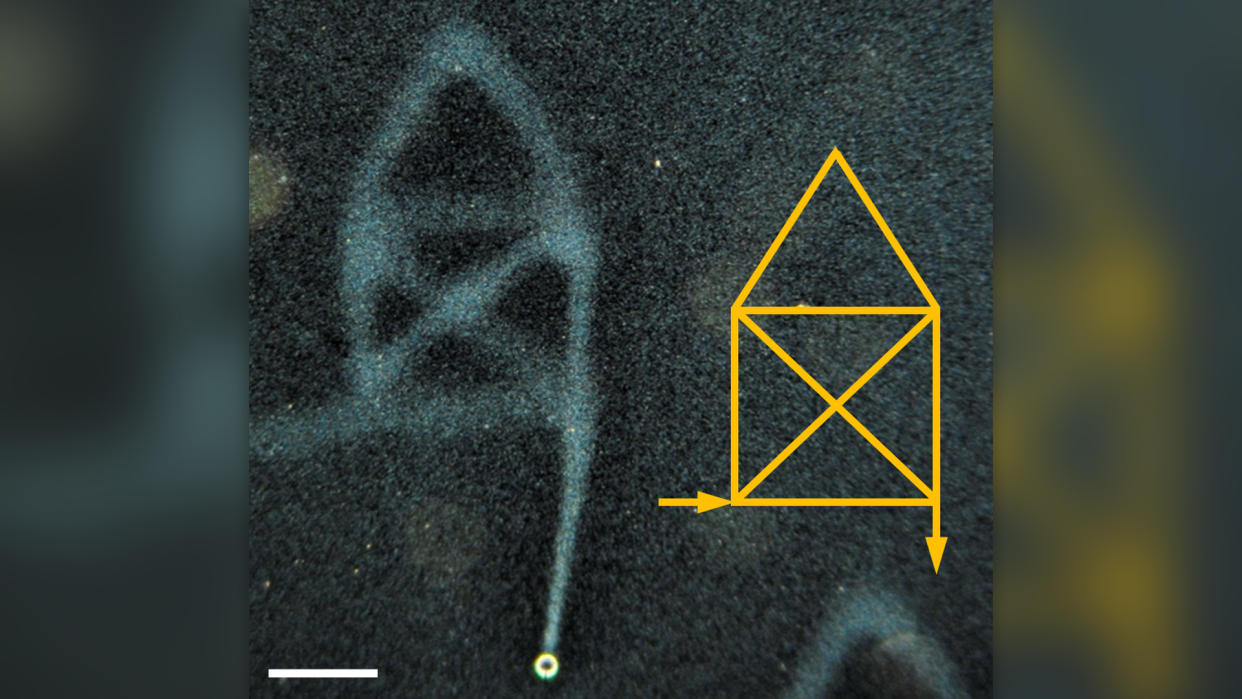
Scientists have discovered a way to write directly into liquid water, creating clear and long-lasting patterns which float below the surface of the fluid.
In the new study, published Aug. 21 in the journal Nano Micro Small, Benno Liebchen and colleagues at the Technical University of Darmstadt and Johnannes Gutenberg University in Germany have developed a method to create long-lasting writing inside of a liquid. The water-writing relies on a chemical process called diffusioosmosis — a spontaneous movement of different types of particles, caused by a difference in concentration within a liquid mixture.
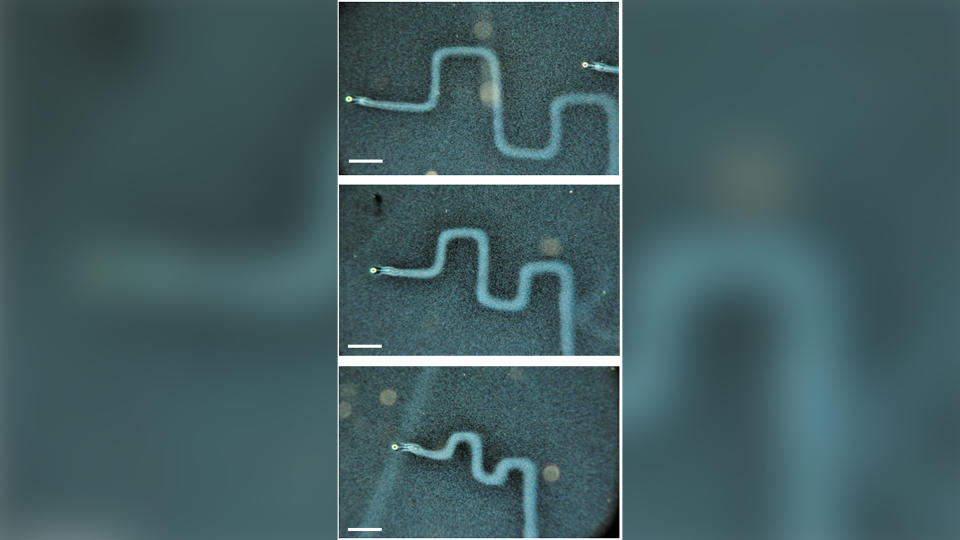
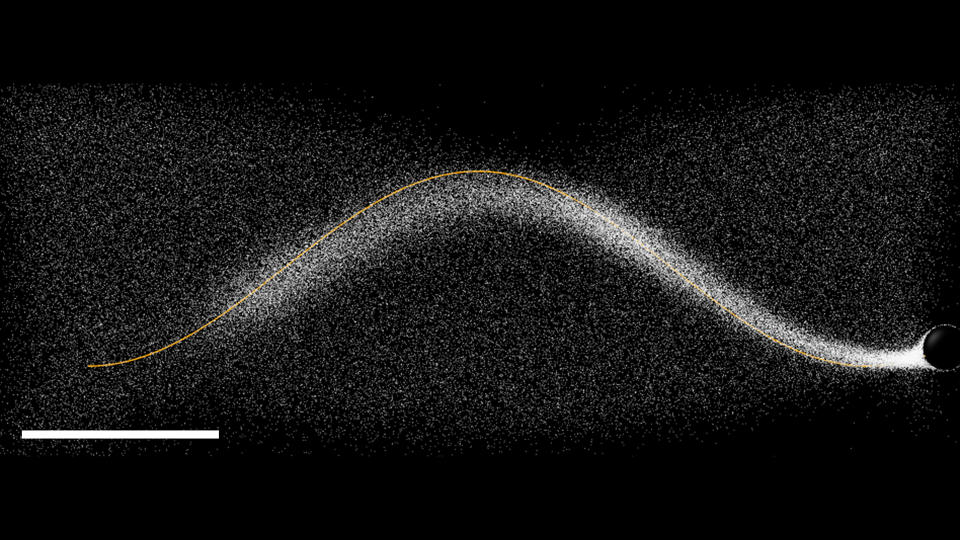
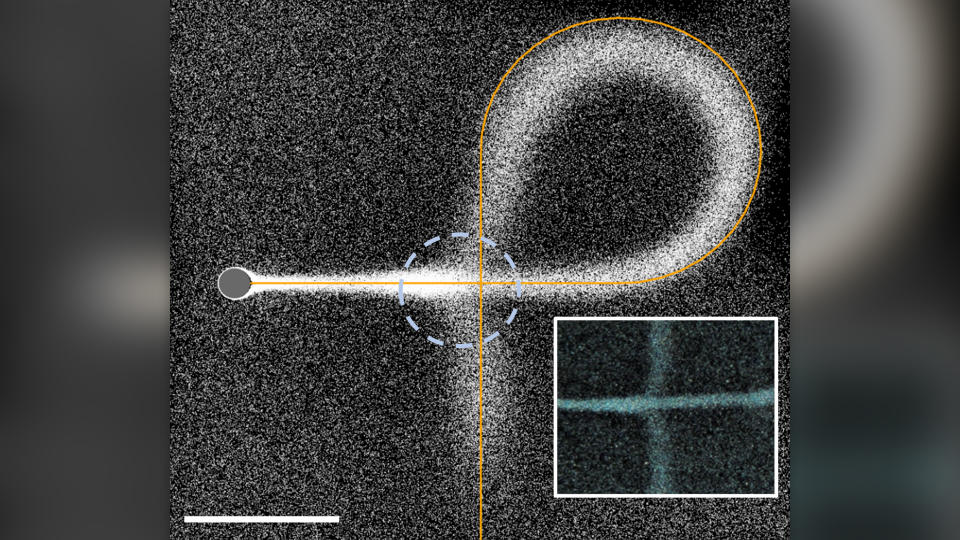
The team's liquid mixture, which contains a low concentration of charged particles called ions, acts as the "paper." The "ink" is made up of large colloidal (solid) particles, which are dispersed thinly through the entire solution. The "pen" is a single small ion-exchange bead — a particle which is able to swap the charged particles in the liquid mixture for different, smaller charged particles.
"When you exchange larger ions with smaller ions, the smaller ions can move (diffuse) faster and that leads to a difference in concentration," Liebchen told Live Science. "This concentration gradient in the ion distribution forces the liquid at the bottom of the container near where the bead is to move. The moving liquid carries the visible colloidal particles (the 'ink') along with it."
Related: What's the highest temperature water can freeze, and the lowest it can boil on Earth?
By rotating the liquid (paper) on a small stage, Liebchen and Palberg exploited gravity to direct the ion-exchange bead pen through the solution to create different patterns. As the bead moves through the liquid, the colloidal particles are drawn into its wake by this concentration gradient effect, resulting in a visible line where the pen has been.
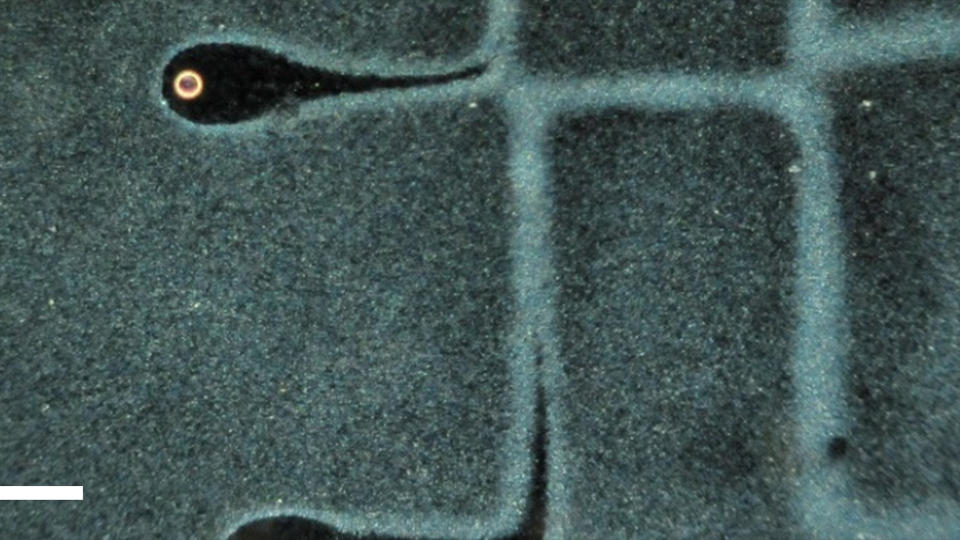
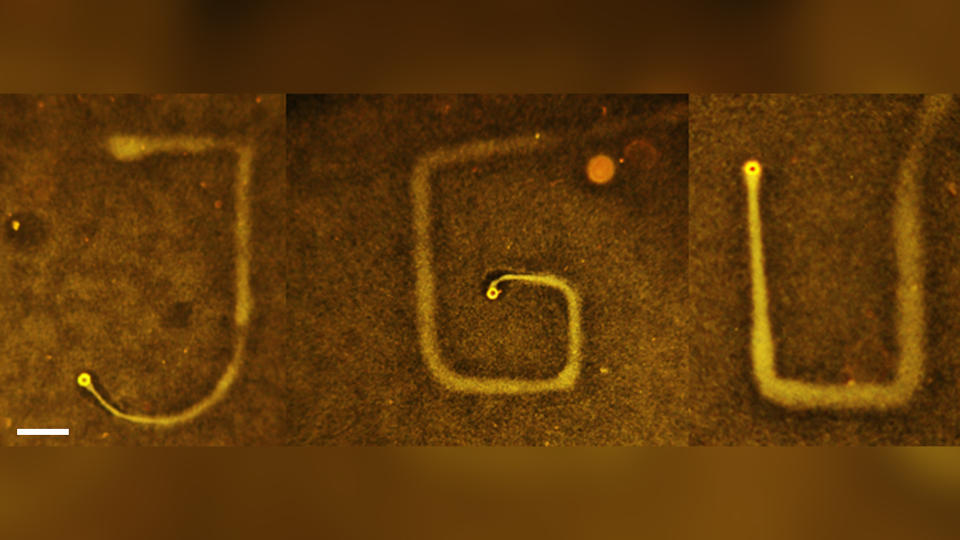
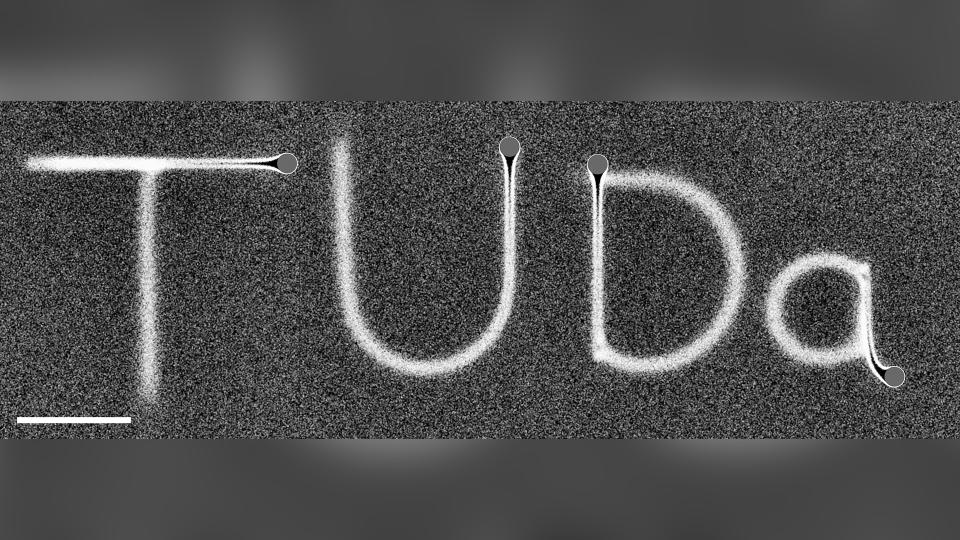
"Importantly, because the pen is small, it doesn't disturb the surrounding solvent too much — a larger pen would agitate the water and destroy what you were writing," Liebchen said. "The colloidal particles are too big and heavy to move much in still water within the time scales of the experiment which is why the lines remain visible."
The team developed this technique using water as the paper and silica particles as the ink so they next explored whether other paper, pen, and ink combinations worked.
RELATED STORIES
—Why does paper tear more easily when it's wet?
—Why do things get darker when wet?
—Scientists manipulate quantum mechanics to slow down a chemical reaction 100 billion times
"Many aspects of the writing approach are quite robust with respect to changing those components, but there are limits of course," said Liebchen. "For example, if the ink particles are too small, you wouldn't see them very well or they would move too much whereas if they're too big, they wouldn't follow the fluid very well. It's a balance but overall the method is quite general."
The team are now looking at different ways of steering the pen by using magnetism or electrical fields instead of gravity and possibly extending this system into deeper liquid mixtures.

